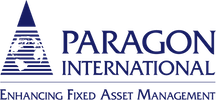Section 179D Energy Tax Credit Study
Reduce Your Commercial Building Energy Costs and Save Taxes
In order to encourage energy efficiency through reduced energy usage, Congress added IRS Tax Code Section 179D under the Energy Policy Act of 2005 (“EPACT”). The provisions under 179D created an incentive in the form of up to $1.80 per square foot (SF) in depreciation tax deductions for commercial buildings. The 179D energy tax deduction allows for an immediate deduction against the taxpayer’s Federal Income Tax liability for an investment in energy efficient commercial buildings.
Under the EPACT, qualifying building owners and commercial tenants are eligible for the 179D deduction, as well as certain designers and builders. The 179D energy tax deduction is eligible for buildings that achieve a 50% reduction in energy costs related to the building envelope, heating, ventilating, air conditioning (HVAC), lighting and lighting controls.
Without the 179D immediate deduction, the cost of these improvements would be depreciated over 15 years for qualified improvement property (QIP), 27.5 years for residential property or 39 years for commercial property.
Originally effective from 1/1/2006 through 12/31/2007, the deduction was extended through 12/31/2016 by The PATH Tax Act of 2015. It was extended again on 12/20/2019 under the year-end government spending package through 2020. This means that commercial buildings placed into service in 2006 and later may qualify for the credit.
The Consolidations Appropriations Act, 2021, signed into law at the end of December, 2020, made the Section 179D Energy Tax Deduction permanent.
Two Key Changes to the Section 179D Energy Tax Deduction
The new tax law comes with two key changes:
- The deduction will be adjusted annually for inflation. The current maximum deduction of $1.80 per square foot will likely change each year. This amount had not changed since the original law was created under the EPAct.
- The bar has been raised for qualifying for the deduction. The most current American Society of Heating, Refrigerating and Air-Conditioning Engineers (ASHRAE) Standard in effect will be the one that applies.
The previous Act referenced ASHRAE 90.1-2007 specifically, and the new Act references simply ASHRAE 90.1. This means that the higher, more stringent standards of ASHRAE 90.1-2019 will now apply. Moreover, when ASHRAE updates their standards again, the previous 50% energy reduction requirements will likely be more stringent.
Requirements for Claiming the 179D Energy Tax Deduction
- A taxpayer must have a qualified individual perform a field inspection of the building.
- The qualified individual must be either a Registered Professional Engineer (PE) or a contractor licensed in the same jurisdiction as the building.
- The qualified individual must use approved software from the IRS and Department of Energy’s list of certified software to calculate the energy savings.
- A qualified individual must certify the results.
- The building or energy renovation must be capitalized after January 1, 2006.
The Section 179D energy tax deduction requirements are not satisfied by LEED certification. A professional engineering analysis by an expert is essential to realize tax savings.
Paragon’s engineering consultants meet these requirements. Contact us today for a no-obligation consultation.
The potential deduction and tax savings for 100%, 66 2/3%, and 33 1/3% qualification is shown below:
| Gross Sq. Ft. Area | Section 179(D) Full Credit Rate | Full Credit Potential Deduction | |
| 200,000 | 1.80 | $360,000.00 | |
| 39% | <== Tax Rate | ||
| 100% Tax Savings ==> | $140,400.00 | ||
| 66 2/3% Tax Savings ==> | $93,604.68 | ||
| 33 1/3% Tax Savings ==> | $46,795.32 | ||
Read our blog for more information about this new law.
For more information about the 179D Energy Tax Credits, visit the U.S. government Office of Energy Efficiency and Renewable Energy.
Success Story
Hotel – While not intentional, a 160 room hotel with restaurants and large meeting rooms qualified for the lighting portion of the credit for a first year tax savings of $46,800.
Distribution Center – Refrigeration, freezer, and dry storage areas at this center with sensor controlled lighting, insulated walls and ceilings, and highly reflective roof satisfied the lighting and building envelope requirements and saved $228,000 the first year!



